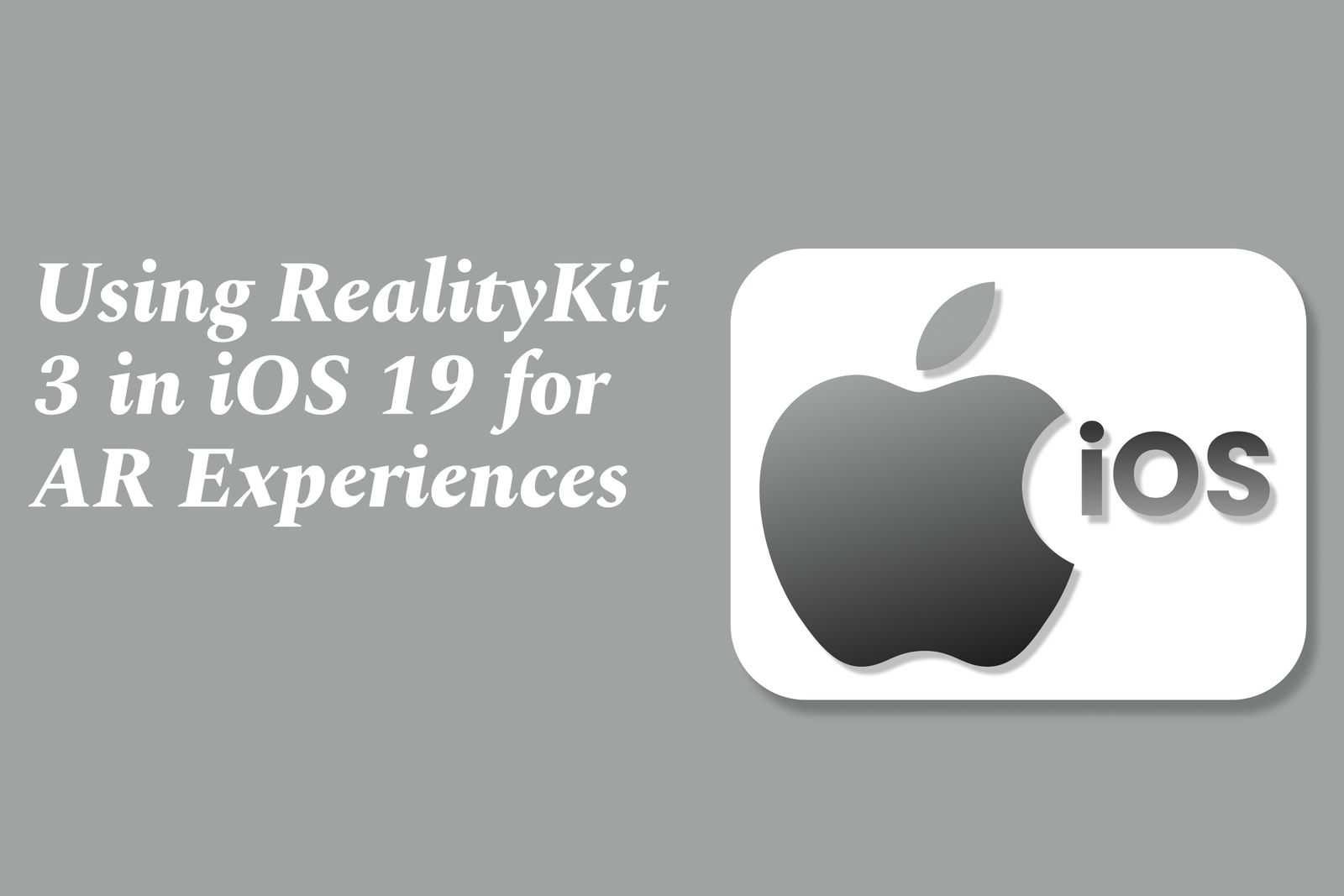Using realityKit 3 in iOS 19 for AR experiences
RealityKit 3 in iOS 19 empowers developers to create immersive AR experiences with enhanced features like People Occlusion, Motion Capture, and seamless integration through Reality Composer, simplifying 3D object handling and delivering more realistic, interactive augmented reality on supported Apple devices.
Using RealityKit 3 in iOS 19 for AR Experiences
1 ) Introduction to RealityKit 3 and ARKit 3 Enhancements
RealityKit 3 builds upon the advancements introduced in ARKit 3, providing developers with improved tools to create immersive augmented reality experiences on iOS 19. With Apple continuously refining its AR frameworks, RealityKit 3 simplifies development while enhancing realism and interactivity in AR applications.
2 ) Significant Improvements from ARKit 2 to ARKit 3
People Occlusion: One of the previous limitations of ARKit 2 was the lack of realistic occlusion of virtual objects by people. ARKit 3 introduces People Occlusion, allowing virtual objects to be hidden or displayed realistically when obstructed by humans, significantly improving immersion. However, this is currently optimized only for human figures and doesn’t extend to object occlusion like paper or other physical materials.
Hardware Requirements: ARKit 3 features require newer devices with at least the A12 processor, limiting compatibility to more recent iPhone models unlike ARKit 2 which supported devices from A9 processors onward.
3 ) RealityKit 3 Simplified and Powerful AR Development
RealityKit 3 reduces the complexities of AR experience development compared to previous frameworks like SceneKit. It enables developers to spawn and manage 3D virtual objects with concise, easy to understand code.
The introduction of Reality Composer, a dedicated app for iOS and Mac, accompanies RealityKit 3 by providing a library of ready to use models, animations, and physics effects, which accelerates the creation and iteration of AR scenes and interactions.
4 ) New Features Enabled by RealityKit 3 and ARKit 3
Motion Capture: Building on people awareness, ARKit 3 supports detailed human motion tracking, enabling developers to incorporate realistic interactions with virtual characters and environments.
These capabilities, combined with advances in RealityKit 3, open new horizons for immersive app development that leverages spatial computing with greater ease and depth in iOS 19.
5 ) Conclusion
RealityKit 3 in iOS 19 represents a significant leap forward for AR developers by marrying powerful new features like People Occlusion and Motion Capture with usability enhancements such as Reality Composer. While hardware requirements narrow device support, the tools provided promise more realistic and engaging AR experiences, empowering creators to push the boundaries of spatial computing on Apple devices.
https://justacademy.in/news-detail/flutter-salary-trends-in-2025
https://justacademy.in/news-detail/google-i/o-2025-highlights:-flutter-takes-the-lead
https://justacademy.in/news-detail/react-native?s-latest-animation-libraries-will-blow-your-mind
https://justacademy.in/news-detail/meta?s-big-push-for-react-native-in-2025
https://justacademy.in/news-detail/kiosk-apps-with-flutter-and-embedded-uis
Related Posts
Java supports GDPR and data privacy by enabling secure data handling through encryption, controlled access, and precise data management. It allows developers to minimize PII exposure, ensure data confidentiality, and design workflows that comply with data protection regulations effectively.
Java code quality tools have evolved to include advanced static analysis, integrated security checks, and AI-powered code reviews. These updates help developers detect bugs, enforce coding standards, and enhance security, streamlining the development process and improving overall code reliability.
Java remains a cornerstone in big tech companies, evolving with modern features like records, pattern matching, and virtual threads. Its robust ecosystem, enhanced performance, and growing AI integrations keep it vital for both legacy systems and innovative new projects.
Java and CI/CD pipeline optimizations streamline Java application development by automating builds, tests, and deployments. They improve efficiency through parallelization, caching, and secure secrets management, enabling faster feedback loops and more reliable, scalable software delivery.
Java supports modern cryptography standards through its flexible Java Cryptography Architecture (JCA), enabling integration of advanced algorithms like AES, EdDSA, and post-quantum tools. Libraries like Bouncy Castle offer FIPS-certified, hardware-accelerated implementations for secure development.
Java 23 enhances record patterns by enabling concise, direct destructuring of record components within pattern matching, simplifying type checks and data extraction. This improvement boosts code readability and expressiveness by reducing boilerplate in handling immutable data classes.
Java remains a top choice for mobile app backends, powering scalable, secure, and high-performance server-side solutions. Latest trends include cloud-native microservices, reactive programming, and enhanced JVM optimizations, enabling efficient, flexible, and robust mobile backend development.
Java SE 24 and LTS Java SE 21 offer enhanced features and performance, while Apache Spark 4.0.0 introduces Scala 2.13 support and advanced ML and SQL capabilities. Together, they empower developers to build scalable, high-performance data applications with modern tools.
JUnit 5 modernizes Java testing with a modular architecture, improved assertions, and seamless Java 8+ support. Beyond JUnit, tools like Mockito and AssertJ enhance mocking and assertions, creating a powerful, flexible ecosystem for writing clean, efficient Java unit tests.
Java plays a pivotal role in cloud automation tools by providing a robust, platform-independent language used to build scalable automation frameworks like Jenkins and Selenium, enabling efficient CI/CD pipelines, testing, and orchestration across diverse cloud environments.










